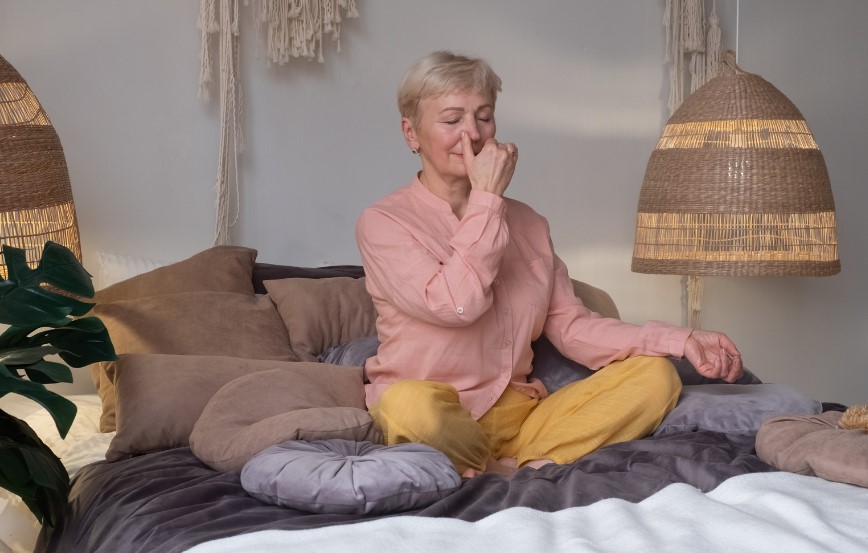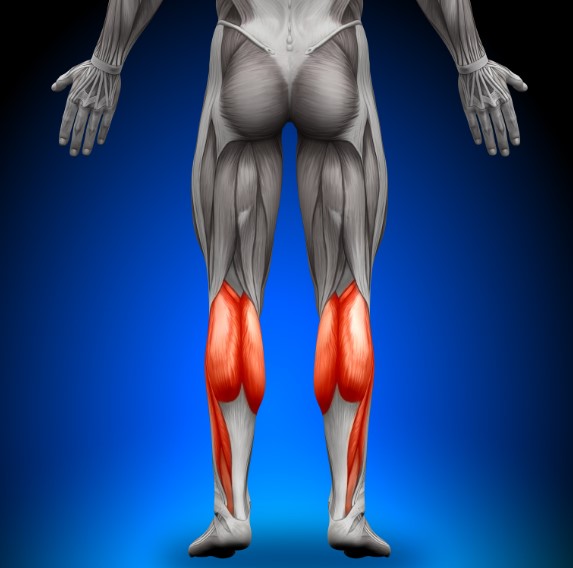In the intricate tapestry of wellness, particularly within the specialized domain of retirement-age adults, the practices of deep breathing and meditation hold a unique and invaluable place.
These age-old techniques offer many benefits, ranging from physiological to psychological, and are especially pertinent for seniors who often grapple with age-related challenges.
This article endeavors to delve deeply into these two interconnected disciplines, providing a thorough exploration of various techniques and a comprehensive, step-by-step guide to mastering them.
Part I: The Science and Art of Deep Breathing
Breathing is a natural process, yet how many of us truly understand the mechanics and potential of each inhalation and exhalation? Deep breathing exercises can transform this simple act into a powerful tool for well-being.
Types of Deep Breathing Exercises
Diaphragmatic Breathing
How to Do It:
- Sit comfortably in a chair with your back straight. Ensure your feet are flat on the ground.
- Place one hand on your chest and the other on your abdomen. This will help you focus on using your diaphragm rather than your chest muscles.
- Close your eyes and take a moment to relax your body and mind.
- Inhale deeply through your nose for a count of four, allowing your diaphragm to expand and your abdomen to rise.
- Hold your breath for a count of two.
- Exhale slowly through your mouth for a count of six, feeling your abdomen fall.
- Repeat this process for at least five minutes.
Benefits:
- Increases oxygen supply to the bloodstream
- Enhances lung function and capacity
- Reduces stress and lowers blood pressure
Box Breathing
How to Do It:
- Sit or stand in a relaxed posture, keeping your hands on your lap or by your side.
- Close your eyes and take a few normal breaths to center yourself.
- Inhale through the nose for a count of four, filling your lungs completely.
- Hold your breath for a count of four, keeping your chest still.
- Exhale through the mouth for a count of four, emptying your lungs completely.
- Hold your breath again for a count of four.
- Continue this pattern for four to five cycles.
Benefits:
- Calms the nervous system and reduces stress hormones
- Improves focus and mental clarity
- Reduces anxiety and induces a state of calm
Alternate Nostril Breathing
How to Do It:
- Sit in a comfortable position with your spine erect and shoulders relaxed.
- Use your right thumb to close off your right nostril.
- Inhale deeply through your left nostril for a count of four.
- Close off your left nostril with your right ring finger, releasing the right nostril.
- Exhale through the right nostril for a count of four.
- Inhale through the right nostril for a count of four.
- Close off the right nostril and exhale through the left nostril for a count of four.
- This completes one cycle. Perform at least five cycles.
Benefits:
- Balances the two hemispheres of the brain, promoting mental equilibrium
- Enhances mental clarity and focus
- Promotes relaxation and reduces stress
Part II: The Tranquil World of Meditation
Meditation is more than a practice; it’s a journey into the self. It offers a pathway to inner peace and a method for cultivating a balanced mind.
Types of Meditation Techniques
Mindfulness Meditation
How to Do It:
- Find a quiet space where you won’t be disturbed.
- Sit comfortably on a chair or cushion with your back straight.
- Close your eyes and take a few deep breaths to center yourself.
- Focus on your breath or a chosen mantra, observing each inhalation and exhalation.
- When your mind wanders, gently bring it back to your breath or mantra.
- Continue this practice for at least 10-15 minutes.
Benefits:
- Increases awareness and mindfulness
- Reduces stress and anxiety
- Enhances emotional well-being and resilience
Transcendental Meditation
How to Do It:
- Sit in a comfortable position with your back straight.
- Close your eyes and take a few deep breaths to relax.
- Silently repeat a mantra of your choice. This could be a word or a phrase that has personal significance.
- Meditate for 15-20 minutes twice a day, morning and evening, allowing your mind to transcend the surface level of thought.
Benefits:
- Lowers blood pressure and improves cardiovascular health
- Improves cognitive function and mental clarity
- Enhances overall well-being and quality of life
Body Scan Meditation
How to Do It:
- Lie down on a flat surface like a bed or yoga mat.
- Close your eyes and take several deep breaths, relaxing your body.
- Begin at the top of your head and mentally scan your body, moving slowly towards your toes.
- As you scan, note any sensations, tension, or discomfort.
- Take your time, spending at least 20-30 minutes on this practice.
Benefits:
- Increases body awareness and mind-body connection
- Reduces muscle tension and physical stress
- Promotes relaxation and mental calm
The Synergy of Deep Breathing and Meditation
The harmonious integration of deep breathing exercises and meditation creates a potent blend that amplifies the individual benefits of each practice.
This synergy is particularly beneficial for seniors, as it offers a holistic approach to wellness that addresses both the physical and mental dimensions of health.
For example, diaphragmatic breathing techniques during mindfulness meditation can deepen the meditative state and enhance its stress-reducing effects.
Deep breathing and meditation practices are not merely isolated techniques but integral components of a holistic wellness strategy. The detailed methods outlined above serve as a comprehensive guide for seniors and anyone looking to embark on this transformative journey.
As we navigate the complexities of aging, the quest for holistic wellness becomes increasingly vital. These practices offer a timeless and practical pathway to a balanced and fulfilling life.
In the pursuit of holistic well-being, especially among seniors, the fusion of deep breathing exercises and meditation emerges as a potent elixir for both body and soul.
I hope this article is invaluable for those seeking valuable resources that improve health, happiness, longevity, and quality of life!
Joe Carson B.S. NASM-CPT/FAS/CN
Master Trainer/Functional Aging Specialist/Certified Nutritionist
Twenty-First Century Aging





